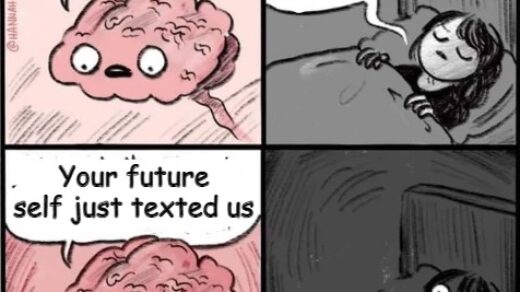Note: Everything written in this blog is backed by credible sources. Primarily the conservative, prestigious science journal known as ‘Nature’. I have listed a reference section at the end. Each timestamped chapter will include a link to the relevant Nature article. You can read them both and compare side by side.
One of the strongest arguments that psychic functioning exists would have to be the work done on Remote Viewing. That is: “the ability of people to access and describe, by means of mental processes, information blocked from ordinary perception by distance or shielding”. It’s a psychic ability and, according to the proponents, we can all access and use it to some extent.
This phenomenon seemed to have held such promise that it’s continued research was funded and subsequently used operationally by the CIA as well as several other government agencies for over 20 years. During this time several other laboratories had supposedly been able replicate this phenomenon in their own studies giving credence to the idea the phenomenon is legitimate. The official stance of the Parapsychology Association is that Remote Viewing is a legitimate and scientifically proven phenomenon.
However, despite all this, Remote Viewing has been rejected by mainstream science. For all the successful replications, psychologist Dr. David Marks was one of those that had no such luck and, as a result, he became a skeptic. Marks ended up becoming the worlds foremost critic on Remote Viewing; His claim to fame was his work alongside Richard Kammann in debunking one of the initial pilot studies in the Marks-Kammann investigation.
The M-K investigation is likely the most referenced work used to debunk Remote Viewing. It is cited by Dr. Thomas Gilovich in his book ‘How We Know What Isn’t So’; Dr. James Alcock has written about it in a review of major parapsychological studies; It was taught by Chip Denman, in his course “Science vs. Pseudoscience”; and it’s also referenced by the James Randi Education Foundation. There is an entire section dedicated to this in the Remote Viewing Wikipedia page under ‘Sensory Cues’.
Problem is… the Marks-Kammann investigation was fundamentally flawed and ultimately turned out to be a complete red-herring.
In this essay, I will prove that the sensory cues in the Marks-Kammann investigation were meaningless. I will do this with credible sources that can be checked at any point using the included links at the top of each section.
Understanding the Story
Thomas Gilovich sums up the conventionally understood story in his book ‘How we know what isn’t so’ with the following:
Remote viewing experiments were devised by two physicists, Harold Puthoff and Russell Targ. In these experiments, a percipient is seated in the laboratory while another subject proceeds to a nearby site that has been randomly selected from a small set of possible locations. While at the target site, the subject looks carefully at the surroundings and tries to send impressions of the locale back to the percipient. At a prearranged time, the percipient is asked to describe any impressions he or she has “received” by drawing a picture, writing a description, or both. This procedure is repeated over several days until all target locations have been visited. Performance in these experiments is assessed by having a group of judges travel to each site, giving them the percipient’s pictures and descriptions (hereafter simply called “transcripts”), and having them rank the set of transcripts according to how well they describe each location. Are the rankings of the transcripts that correspond to each location higher than we can expect by chance? The success rates claimed by Targ and Puthoff for their remote viewing experiments are among the most impressive ever reported in the field of parapsychology. For some of their more gifted subjects, the matching of transcripts to targets was almost without error. Moreover, Targ and Puthoff claimed that nearly everyone they tested was able to manifest this ability. Psi is not the exclusive property of the Uri Gellers of the world, but can be harnessed by anyone off the street. For some people, the publication of these Belief in ESP results in the prestigious science journal Nature, rather than the usual parapsychology outlets, lent further weight to the evidence. How well do these results stand up under close scrutiny? Careful examination of this work by New Zealand psychologists David Marks and Richard Kammann indicate that, like its predecessors as the bedrock support for psi, these experiments do not pass muster. The problem in this case lies in the nature of the transcripts provided to the judges. Most of the material in the transcripts consists of the honest attempts by the percipients to describe their impressions. However, the transcripts also contained considerable extraneous material that could aid a judge in matching them to the correct targets. In particular, there were numerous references to dates, times, and sites previously visited that would enable the judge to place the transcripts in proper sequence. For instance, a comment such as “I’ve been trying to picture where you went yesterday on the nature walk” informs the judge that: 1) the correct target must not be the nature preserve; 2) this target, whatever it was, was not the first in the series; and 3) this target, whatever it was, came after the nature preserve. Knowing the target is not the nature walk obviously simplifies the judge’s task regardless of what additional information he or she has. However, information about where the transcript fits in the sequence of target sites is only helpful if the judge is aware of the target order. Astonishingly, the judges in the Targ-Puthoff experiments were given a list of target sites in the exact order in which they were used in the tests! To determine whether it was these extraneous cues rather than remote viewing that produced the remarkable accuracy of the judges’ rankings, Marks and Kammann conducted a control assessment they call “remote judging.” In remote judging, the judges are given a set of transcripts containing only the extraneous cues and none of the legitimate descriptive material. Then, without visiting a single location, they are given a list of the target sites in the proper order and asked to match transcripts to targets. They did so as accurately as the judges in the Targ-Puthoff experiments! As an additional control procedure, Marks and Kammann edited the transcripts from the Targ-Puthoff experiments so that they no longer contained these extraneous cues, and then asked a group of judges to match them to the targets. Without the help of the extraneous information, the judges were not able to do so with any accuracy. So much for remote viewing.
How we know what isn’t so: fallibility of human reasoning in everyday life – Thomas Gilovich (1991)
It should be stressed how important this debunking narrative is; The main gripe is solely the judging procedure. These are considered “honest attempts” otherwise. Let’s dive deeper into the story and find out what really happened…
1974 – Where It All Started…
Nature Vol. 251 – Information transmission under conditions of sensory shielding – Harold Puthoff, Russell Targ. We are interested in the Pat Price series of experiments that starts at the end of page 604 under the title ‘Remote Viewing of Natural Targets’.
Note: I am not going to cover the first series of Remote Viewing experiments with Uri Geller. Despite largely being considered debunked by James Randi in his book ‘Flim-Flam’, Michael Prescott has already done a great job investigating and revealing the flaws with Randi’s narrative in his article ‘Flim-Flam Flummery: A Skeptical Look at James Randi’.
Gilovich has filled us in for the most part but there are some other details worth knowing:
…the experimenters and the subject were kept blind as to the contents of the target pool, which were used without replacement. An experimenter was closeted with Price at SRI to wait 30 minutes to begin the narrative description of the remote location. The SRI locations from which the subject viewed the remote locations consisted of (…), the double-walled copper-screen Faraday cage (Experiments 3, 4, and 6-9)(…). A second experimenter would then obtain a target location from the Division Director from a set of travelling orders previously prepared and randomised by the Director and kept under his control. The target demarcation team then proceeded directly to the target by automobile without communicating with the subject or experimenter remaining behind.
These controls are pretty tight. No one can ‘subliminally’ give the locations away with facial Morse-code as no one actually knows where the location is until the out bounders/demarcation team is already on their way. Throughout this entire process the psychic is being watched and for 6/9 experiments the target was in a room that absorbs radio signals, so no earpiece funny business.
I lack the creative thinking necessary to come up with a way to plausibly cheat in the experiment provided. I can’t rule out the possibility, but I can’t create one either. It seems the skeptics also couldn’t as it was conceded that these were honest attempts. And the results?
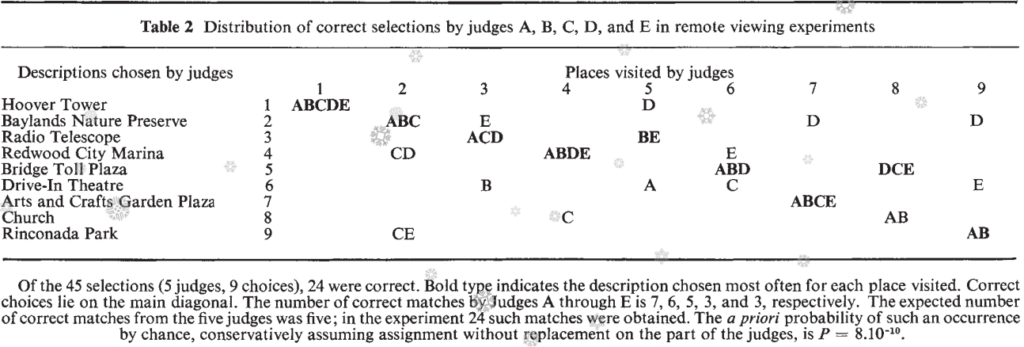
Far too extreme to be attributed to chance occurrence.
CONCLUSION From these experiments we conclude that: – A channel exists whereby information about a remote location can be obtained by means of an as yet unidentified perceptual modality. – As with all biological systems, the information channel appears to be imperfect, containing noise along with the signal. – While a quantitative signal-to-noise ratio in the information-theoretical sense cannot as yet be determined, the results of our experiments indicate that the functioning is at the level of useful information transfer.
In layman’s terms:
- People have a psychic ability to pull information from seemingly nowhere. We have no idea how it works.
- It’s not a perfect ability, it can have limitations (think blurry eyesight).
- We can’t pinpoint how ‘psychic’ someone is. Regardless, it seems like the ability could be useful.
It’s worth noting the publication of this paper was highly controversial. Nature made it clear that this publication should not be seen as a seal of approval. You can read more about their initial reservations and reasons to publish here on page 5 of the pdf.
Nevertheless, they published. A parapsychological study was happening at a major research institution and was getting significant results. They didn’t know if the work would stand up to scrutiny, but still thought it was worth taking the risk. If critique can be soundly refuted, this would genuinely be a very significant moment for science.
1976 – Replications are published
Targ-Puthoff appear to have been successful in their replication experiments. They secure another astounding victory, getting published in another highly reputable, prestigious science journal.
What is particularly interesting is Targ’s story on how they managed to get published:
In order to publish our findings in the 1976 Proceedings of the IEEE, we had to meet with Robert W. Lucky, managing editor, and his board. The editor proposed to us that we show him how to conduct a remote viewing experiment. If it was successful, he would publish our paper. The editor was also head of electro-optics at Bell Telephone Laboratory. We gave a talk at his lab. He then chose some engineers to be the “psychics” for each of five days. Each day he hid himself at a randomly chosen location in the nearby town. After the agreed-upon five trials, the editor read the five transcripts and successfully matched each of the five correctly to his hiding places. This was significant at 0.008 (one in 5!, 5-factorial). As a result, he published our paper on “Information Transmission Over Kilometer Distances”.
espresearch.com – Russell Targ vs. Wikipedia about Remote Viewing
He apparently got them to conduct their own Remote Viewing replication experiment which turned out successful.
1978 – Enter the Debunkers
Marks and Kammann published a response to the Price series in Nature based on their own experiments in regards to the judging procedure. They say:
Although not stated in the original reports the judges were provided with a listing of targets in the correct (original) sequence. In addition, careful examination of the transcripts indicated that a large number of cues were available indicating the position of a transcript in the series; for example: (1) Price expresses apprehension and an inability to do this kind of experiment (Target 1); (2) a reference is made to the fact that this experiment is the “second place of the day” (Target 2); (3) a reference is made to “yesterday’s two targets” (Target 3); (4) Targ says encouragingly: “Nothing like having three successes behind you” and mentions the nature reserve visited the day before (Target 4); (5) Price refers to the Marina which was the fourth target (Target 7). Using these, and other, cues I was able to match the five transcripts correctly with a rank of one (100% confidence)
Marks found he could get 100% of the matches just from the cues alone. Provided you were handed the target locations in order of visitation, you can quite clearly make those matches in full confidence in that situation. He continues…
Two judges, visited these targets in a random sequence and independently ranked the five transcripts at each location, extraneous cues having been removed. Each judge made a detailed content analysis of the descriptive information provided in the transcripts and ranked them on the basis of the descriptive accuracy of the information available. The two judges produced sums of ranks of 16 and 13, neither of which departs significantly from the chance expectation of 15. These results provide a striking contrast to the correct matchings obtained when the cues from the unedited transcripts were used in making the judgments. The null result also contrasts with the significant matching obtained with unedited transcripts by the original SRI judges. (…) Our investigation of the SRI remote viewing experiments forces the conclusion that the successful identification of target sites by judges is impossible unless multiple extraneous cues which were available in the original unedited transcripts are used.
This is frustrating. After the steps taken to insure the integrity of the original experiment it seems they managed to allow for a fatal oversight. They apparently ranked the legitimate information and none of it was above chance expectation. This will also cast significant doubt on any of their replications as well. At first glance, it seems that it could be case closed and that there was never any evidence of psychic functioning being demonstrated.
Being Skeptical About Skeptics
There is something off in the Marks-Kammann testimony…
it was agreed that I should rank in order a subset of five transcripts against five target locations. The remaining four locations and transcripts were excluded as they had already been published and I would have seen their pairings.
On surface level this makes sense… but, let’s do a thought experiment: You are the Targ-Puthoff team. You just found significant evidence of someone’s ability to psychically obtain information at a distance and you want to publish some of your transcripts that support your findings. Wouldn’t you specifically publish the transcripts that best supported your conclusion that psychic functioning has been demonstrated?
Hang on, if M-K are excluding the best transcripts, by that logic, the only remaining transcripts to use in their dataset are the ones that would have been naturally the least likely to support T-P’s conclusion that psychic functioning was demonstrated...

By comparing the data we were given from the original experiment to the investigation, it’s now clear Marks & Kammann would have no idea if theoretically the top 33% of the data showed any evidence of psychic functioning.
Ladies and Gentlemen: The world’s most referenced investigation that supposedly debunks Remote Viewing is entirely composed of a cherry-picked subset of data that would obviously negatively skew the results.
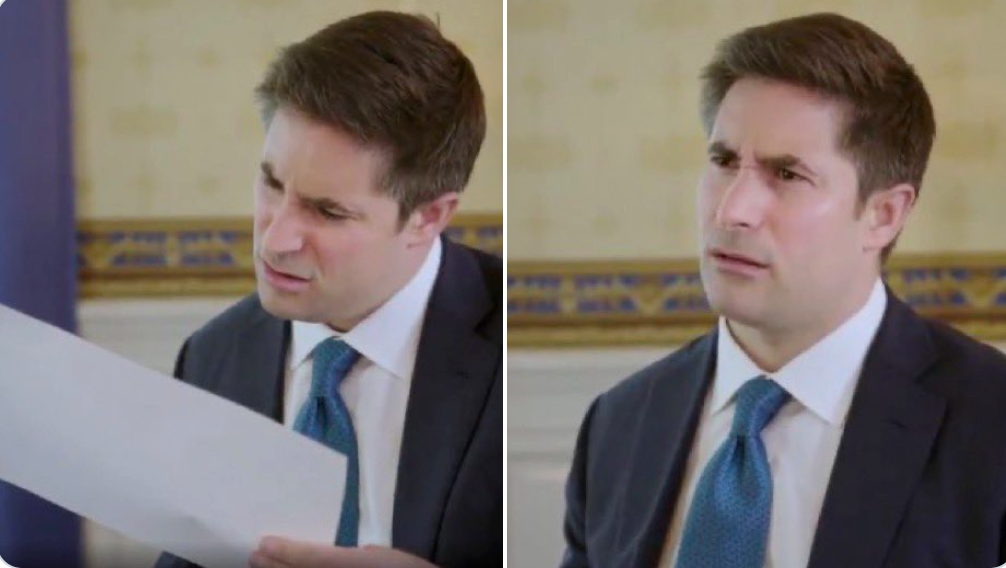
Considering this, Marks has no grounds to complain about the ambiguity of data, this is to be expected from the chosen subset. This fact should, by itself, arguably be enough to invalidate the M-K investigation.
Another point to note, I agreed with Marks when he demonstrated that, from the cue examples, you could match the transcripts with 100% confidence easily. However, the Targ and Puthoff judges in the original experiment did not. Not even close. In the M-K subset, most of the locations originally didn’t get a majority match. This means we know that the judges involved in the experiment are not actively attempting to cheat.
It should also be considered that if the Marks-Kammann hypothesis is correct, I would have expected the most damning cues to have come from the published transcripts that were successfully matched by 80% of the judges or higher. These cues should have been mentioned assuming they exist.
Taking the last point into account: the published transcripts should be extremely vague or wildly generic under the M-K hypothesis. So why isn’t this pointed out in the investigation either? Marks has clearly read these transcripts. He has outright stated he thought there could be something to this; So much so that he performed his own study that ended up failing to replicate any statistical significance. Shouldn’t such an issue have been obvious from just reading the original transcripts published in Mind-Reach? Did Marks lack good judgement? or was there actually something interesting in those transcripts that suggested psychic functioning had occurred?
1980 – What Most Skeptics Don’t Tell You
Nature Vol. 284 – Information transmission in remote viewing experiments – Charles T. Tart
Charles Tart takes it upon himself to prove the validity of the Pat Price series of psychic experiments.
On reading Marks and Kammann, one of us (Charles T. Tart), who had no connection with the original Price series, offered to independently reanalyse that series to test the validity of the Marks-Kammann hypothesis. He edited the transcripts carefully, removing all phrases suggested as potential cues by Marks and Kammann, and removing any additional phrases for which even the most remote post hoc cue argument could be made. The series was then rejudged by a new independent qualified judge (having previously shown competence in blind matching and verbal content analysis of similar materials) who was unfamiliar with the Price series. The materials turned over to the judge consisted of the newly edited transcripts presented in random order, and the list of target sites, also in random order.
(…) The result of the blind matching of transcripts to target sites in the rejudging was that seven of the nine were again correctly matched.
It now seems that the original problems have been addressed and the original experiment is scientifically valid again. But Tart is not finished. He goes on…
It is also important to note that the Marks-Kammann critique did not address the quality of the remote-viewing descriptions in the transcripts per se, but was instead limited to criticism of a particular judging procedure used to evaluate those descriptions
Tart has brought up conflicting information here. Marks and Kammann did address the quality of the remote viewings in his original report. He got judges “to make a detailed content analysis of the descriptive information (…) ranked on the basis of the descriptive accuracy” and “neither of which departed from chance expectation”. That does address the quality to some extent.
when the target was a boat marina the subject gave a consistent narrative that began with “What I’m looking at is a little boat jetty or boat dock along the bay. It is in the direction about like that (pointing) from here. Yeah, I see the little boats, some motor launch (sic), some little sailing ships…” For a landmark Hoover Tower site, the subject summarised his impressions as “The area–I have a place– seems like it would be Hoover Tower”. For a recreational swimming pool site with a 75 ft x 100 ft rectangular pool and a 110 ft diameter circular pool, the subject made a drawing of the target area as centred about two pools of water, which he dimensioned as a 60 ft x 89 ft rectangular pool and a 120 ft diameter circular pool; and so forth.

At this point I would like to quote, again, what Marks and Kammann stated as the conclusion to their analysis.
Our investigation of the SRI remote viewing experiments forces the conclusion that the successful identification of target sites by judges is impossible unless multiple extraneous cues which were available in the original unedited transcripts are used.
Pat Price actually SAID Hoover Tower for the Hoover Tower location. 100% of the original judges managed to match that particular transcript. No cues are necessary, present or otherwise. Checking the locations on google maps satellite and street view also shows that the Marina was the only location where boat docks and jetty’s are and could have possibly been present. This location was matched accurately by 80% of the judges (I am very curious how one of them managed to get this wrong).
Every single single example offered here was from the published transcripts that had been omitted from the M-K investigation’s dataset. On top of the omitted transcripts, this also voids the Marks-Kammann hypothesis.
Given (1) the failure (by empirical test) of the cueing-artefact hypothesis to account for the success of the first-published SRI remote-viewing study, (2) the inapplicability of this hypothesis to the later SRI replication studies, and (3) the replication of this work in our own and other laboratories, the bulk of which is successful, the data continue to confirm the original conclusion that remote viewing is a viable human perceptual capability.
This is true, Targ-Puthoff and others have done replications while still finding statistically significant evidence to support the Remote Viewing hypothesis. This was also published in a highly reputable and prestigious science journal the Institute of Electrical and Electronics Engineers: 1976 – IEEE – Perceptual Channel for Information Transfer over Kilometer Distances: Historical Perspective and Recent Research – Harold Puthoff, Russell Targ
1981 – David Marks Remarks
Nature Vol. 292 – Sensory cues invalidate remote viewing experiments – David Marks
What I’m particularly interested in seeing is how Marks handles the argument of accurate empirical data
the editing of transcripts was carried out by one of the investigators (Tart). As Tart was himself aware of the correct target-transcript pairings, this could have led to biasing.
This is his opening argument. It is unsubstantiated speculation. In fairness, Marks has had immense trouble gaining access to this data.
it is not permissible to include material for re-judging which has already been published or which may be available in some other form.
This is how Marks has chosen to handle the issue of the surprisingly accurate transcripts that had been omitted from his investigation. He is, as best as I can tell, saying “You should ignore the transcripts that obviously void my investigation’s conclusion because I said so”.
Marks-Kammann had omitted 44% of the original data from the set, this includes the only 33% of the data that had 80% of the judges match the transcripts correctly or higher. Such an omission will obviously have a significant impact on the results. It is impossible to condone an investigation that conveniently ignores all of the data in the best position to support the original findings.
A so-called ‘blind’ judge may have some memory of previously seen target-transcript matchings or have access to the published material. only five of the series of nine targets and transcripts for which there is no normal or available method of matching except perceived similarity, could validly be used in re-judging. The remaining four transcripts should have been excluded, as in the unsuccessful-rejudging exercise reported by us.
This is an ad hominem attack and it’s a logical fallacy. It was stated by Tart that the judge found had not previously seen any of their materials which is necessary for this reason. If he is accessing the published material that would be fraud.
But even more importantly than that: Imagine a world where your independent judge would need to look up the answers in Mind-Reach to match “Hoover Tower” to ‘Hoover Tower’.
A much more serious problem with the response of Tart el al. to our report is their claim that sensory cues were not present in later experiments. Unfortunately, I have been unable to obtain a complete set of transcripts from SRI investigators despite frequent requests. However, in June 1977, Dr Arthur Hastings, who was a consultant to the SRI investigations responsible for judging experimental transcripts, allowed me to see six transcripts from the series with the subject H. Hammid, and I was far from satisfied with them as they contained sensory cues. A listing of targets in Hastings’ possession correlating 0.83 (P \< 0.01) with the order of target usage, together with transcript cues, would have provided an artefactual basis for correct target-transcript matchings.
But Tart clearly stated in 1980 that in these experiments they randomise all the target site orderings. So that theory voids itself immediately. The entire argument is dead on arrival.
That’s it, that’s all the arguments he presents. He has made absolutely no attempt to address the Hoover Tower in the room and he now starts to question the character of the experimenters involved. His one example of a remaining artefactual cue literally voids itself as we now know the orderings are randomised.
I want to be clear. I am not making this up. His arguments are literally this weak. The links to the articles are freely available in each section if you want to read and analyse them yourself. Marks really has been forced into a corner where he is actively committing logical fallacies in an attempt to defend his case.
1981 – Targ and Puthoff Response
Nature Vol. 292 – Rebuttal of criticisms of remote viewing experiments – Russell Targ
That list, which Marks used to formulate his criticism, was randomized by a random number generator to prevent the very possibilities he raises. When one takes this into account, one finds that his criticism is voided at its foundation.
This had already been stated by Tart and thus Marks nulls his own complaint. The rest of the article is Targ showing mathematically his work still can stand for itself.
1983 – The Case of ESP by the BBC
A documentary is released featuring the most notable work in the field of parapsychology. Research on Remote Viewing is featured quite heavily throughout (29:27). As the world’s leading critic of Remote Viewing, David Marks also gets to have his say(38:31). I highly recommend watching this documentary in full as it provides an objective view of the state of parapsychology research.
The producers were given access to the Price transcripts for re-enactment (31:08). From this we get a much clearer idea of how accurate Price’s data was.
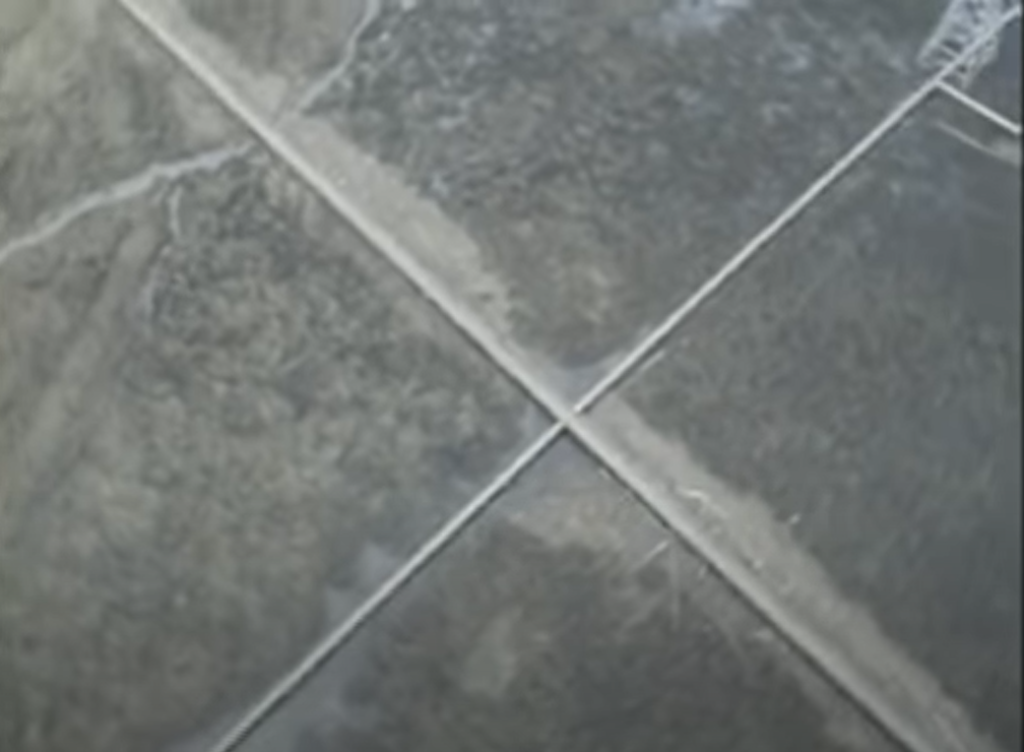
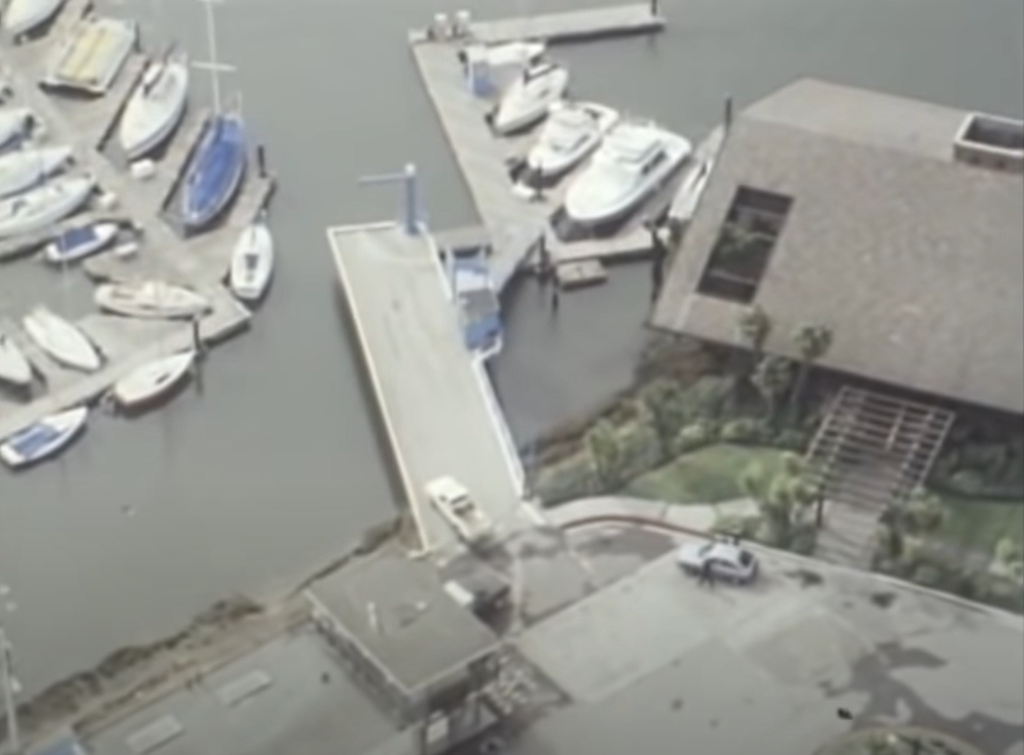

It is overwhelmingly clear that the legitimate transcript data produced by Price can be used to match some of these locations.
1986 – Final “Exposé” From David Marks
Remote Viewing Exposed – Nature Vol. 319. Marks is now accusing Tart of continuing to leave cues in the original experiments transcripts.
However, before I present the evidence outlined by Marks I want to show an excerpt from the original 1974 Nature publication where Targ & Puthoff outline details of the original experiment:
An experimenter was closeted with Price at SRI to wait 30 min to begin the narrative description of the remote location. The SRI locations from which the subject viewed the remote locations consisted of an outdoor park (Experiments 1, 2), the double-walled copper-screen Faraday cage discussed earlier (Experiments 3, 4, and 6-9), and an office (Experiment 5). A second experimenter would then obtain a target location from the Division Director from a set of travelling orders previously prepared and randomised by the Director and kept under his control. The target demarcation team (two to four SRI experimenters) then proceeded directly to the target by automobile without communicating with the subject or experimenter remaining behind. Since the experimenter remaining with the subject at SRI was in ignorance both as to the particular target and as to the target pool, he was free to question Price to clarify his descriptions. The demarcation team then remained at the target site for 30 min after the 30 min allotted for travel. During the observation period, the remote-viewing subject would describe his impressions of the target site into a tape recorder. A comparison was then made when the demarcation team returned.
Now let’s look at the cues provided by Marks.
The Price series of remote viewings consisted of nine experiments. Eight of the allegedly edited transcripts (all except the one from Experiment 2) retain information concerning the subject’s location. These were a park in Experiments 1 and 2, an office in Experiment 5, and a shielded room in the remainder of the experiments. The transcript for Experiment 1 also retains the passage at the very beginning where Price expresses apprehension about being able to perform the task: “the feeling that one can’t or won’t be able to do it and shouldn’t even try it”. The transcript from Experiment 3, the first to be conducted inside the shielded room, quotes a question from Targ as to whether the subject noticed “any difference in being in a shielded room compared to being in the park”. (…) Experiment 5 is also invalidated because its transcript contains the uniquely diagnostic cue of the subject’s location (an office) used only on this occasion. Hence only Experiments 6 and 8 remain potentially uncued in the rejudging exercise.
The first thing to clarify is that when Marks is talking about “subject’s location” he is talking about the PSYCHIC’s location–NOT the out bounder/demarcation team. What this means is none of these cues presented give any information on the target locations whatsoever.
Second, the cues presented by Marks could potentially allow you to order the list of transcripts in chronological order to some degree. However the list of target locations handed to the judge was randomized in the repeat assessment carried out by Tart. What this means is that by ordering the transcripts in chronological order of visitation carries no advantage to matching them against the target locations. This forces the judge to use his literacy skills to match the transcript that says “The area–I have a place– seems like it would be Hoover Tower” to, hopefully, the target location ‘Hoover Tower’.
It’s the same thing he pulled in 1981 but the main difference is that he has neglected to mention the target locations have to be handed in order of visitation for this to work.
But! it’s still invalid according to Marks. Why? Because you can look up all the ordered pairings in the original 1974 Nature article on the table with target number to location pairings. And thus, the entire narrative that this experiment is invalid is complete; As we can never be sure that the judge didn’t look up that article to find out “Hoover Tower” matched to Hoover Tower.
This is the last of the conversation between Targ-Puthoff and Marks. Ultimately Marks is relying on another ad hominem fallacy. He has neither explicitly stated what the cues he found were or how they can logically be used to invalidate the experiment. Until he does so, there is no real reason not to consider the experiment still scientifically valid.
2000 – Psychology of the Psychic (2nd Edition)
To make sure I hear Marks’ full side of the story, I read Psychology of the Psychic. This book is arguably the bible of explaining why Psychics and Parapsychologists are ‘full of it’. It’s currently being used on the Remote Viewing Wikipedia page to support the claim that there is no scientific evidence for Remote Viewing.
I read this looking for answers for one specific question: Does Marks actually state what the cues he found in 1986 actually were and how they logically can be used to invalidate the Pat Price experiment? On page 64 we get the answer:
Tart, Puthoff, and Targ claimed to have conducted a rejudging of the price series with all of the cues removed from the transcripts. After receiving requests for a set of the edited transcripts on multiple occasions over three years, Puthoff eventually sent them to a colleague, Dr. Chris Scott. On inspecting these supposedly “edited” transcripts, it was readily apparent that many obvious cues were still present. This was the final straw. The little remaining credibility for Targ and Puthoff had now been absolutely and irrevocably destroyed. Aided and abetted by Charles Tart, Targ and Puthoff had been responsible for either gross incompetence or a cynical exercise in deception and fraud.
The answer is no… he gives no information on those cues at all.
“A Cynical Exercise in Deception and Fraud” for Whom?
In ‘Psychology of the Psychic’, Marks goes over the sensory cues from 1974 pre-rejudging with a similar level of explanation that was given in his 1978 letter published in Nature. He states the cues and explains in great detail how they can be used to lead the judges to the correct matchings.
Now, upon reading the 1986 chapter of this blog post, it should be obvious from the information that Marks provides that the cues found post-rejudging cannot lead judges in the same way. The judge must actively make the decision to cheat and look up the answers for those “cues” to mean anything. That is obviously a weaker argument and isn’t even substantiated. That omission is quite significant.
Marks doesn’t mention in PotP2 that in Tart’s rejudging the lists of locations had been randomised before being handed to the judge. He merely mentions that cues are still present. What this means is that every reader of PotP2 is led to believe those cues are just as incriminating as the initial cues for the same reasons in that it would supposedly lead the judge to the correct answers just from the cues alone. This is also incorrect.
I don’t believe it’s realistic that Marks would have ‘accidentally’ misled his audience to such a favourable conclusion. This is passage was incredibly deceptive. In my opinion, Marks is clearly trying to make it look like he came out on top of the Nature exchange. To put it in his words, this is either “gross incompetence or a cynical exercise in deception and fraud” on the part of Marks.
Conclusion
Given the current available information several conclusions can be drawn:
The first is that the Price series, in it’s original state, was flawed. Marks & Kammann have done a good job of articulating the problem and demonstrating how it can be used to influence the judges to make the matches.
However, M-K have failed to demonstrate that this was the reason for the success. In their investigation they have omitted the top third of transcripts that had been judged most accurately (80%+). When considering that the subset used by Marks-Kammann originally were accurately matched by only 0% to 60% of the judges, the claim that they couldn’t match the transcripts accurately becomes vacuous as they’ve more or less verified the original result. The irony here is that the M-K investigation actually suggests that the original judges had performed their duty properly.
To assess whether or not the significance of the experiment was achieved legitimately, the inclusion of the highest ranking transcripts is vital despite Marks’ reservations.
Tart’s judging procedure revision includes all the transcripts and eliminates all cues. Marks 1986 ‘exposé’ confirms this. The claim that cues are still present in the transcripts is a clear exaggeration. The judge had no prior familiarity with the Price series material and therefore would not have been influenced by anything other than the legitimate transcript data.
Marks’ claim that the judge could still have actively cheated by sneaking off to look up published material is technically true. He has directly made the claim that his evidence for Tart’s judge doing this is that he was still able to make matches…
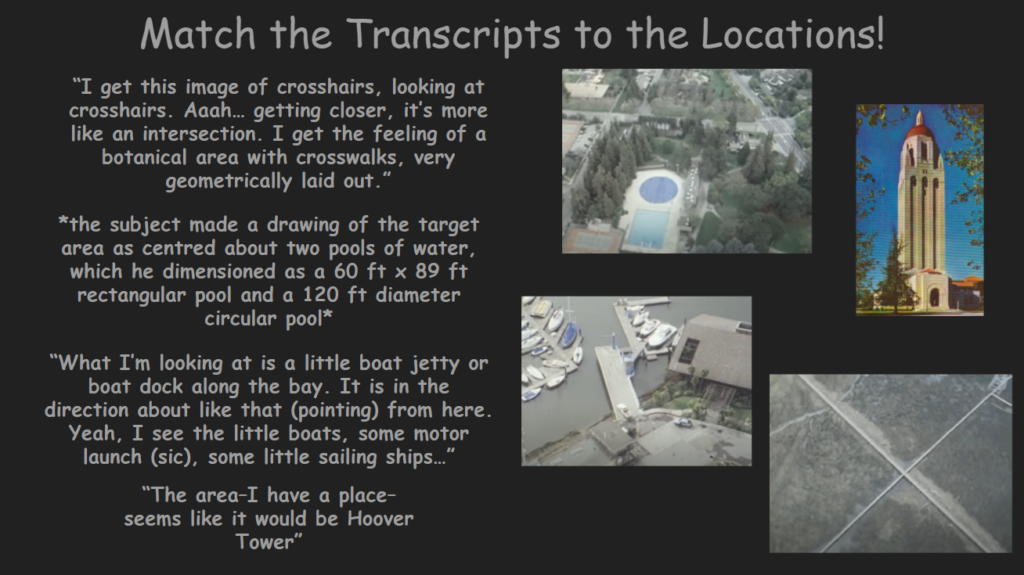
Did you manage? Don’t worry if you didn’t; Some of the best known doctorate-level, professors of psychology can’t seem to do it either.
Given the genuine level of startling accuracy demonstrated in some of the Price transcripts. It is unreasonable to argue that matches cannot be made and it is insane to argue the fact that the fact matches were made is evidence of cheating. If a skeptic wants to attempt to debunk the Price series they must explain how such accurate data was achieved. Currently there is no prosaic explanation for how this has been done and if the untenable Marks-Kammann narrative is the best that can be offered, it inadvertently becomes quite high-praise for the Price series.
References
- 1974 – Nature Vol. 251 – Information transmission under conditions of sensory shielding – Harold Puthoff, Russell Targ
- 1976 – IEEE – Perceptual Channel for Information Transfer over Kilometer Distances: Historical Perspective and Recent Research – Harold Puthoff, Russell Targ
- 1978 – Nature Vol. 274 – Information transmission in remote viewing experiments – David Marks, Richard Kammann
- 1980 – Nature Vol. 284 – Information transmission in remote viewing experiments – Charles T. Tart
- 1981 – Nature Vol. 292 – Sensory cues invalidate remote viewing experiments – David Marks
- 1981 – Nature Vol. 292 – Rebuttal of criticisms of remote viewing experiments – Russell Targ
- 1983 – BBC Documentary – The Case of ESP
- 1986 – Nature Vol. 319 – Remote Viewing Exposed – David Marks
- 1991 – How We Know What Isn’t So – Thomas Gilovich
- 1995 – CIA FOIA – An Evaluation of Remote Viewing: Research and Applications
- 2000 – Book: Psychology of the Psychic – David Marks
- 2004 – Mind-Reach – Hal Puthoff, Russell Targ
- 2014 – espresearch.com – Russell Targ vs. Wikipedia about Remote Viewing
- 2020 – Book: Psychology and the Paranormal – David Marks

